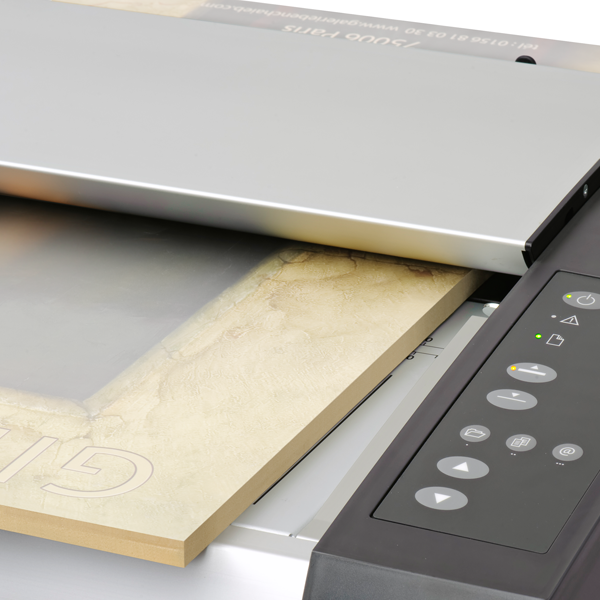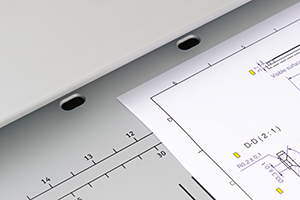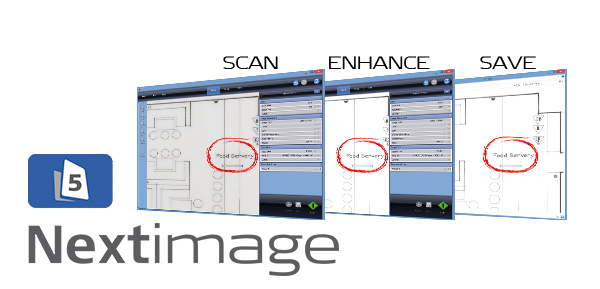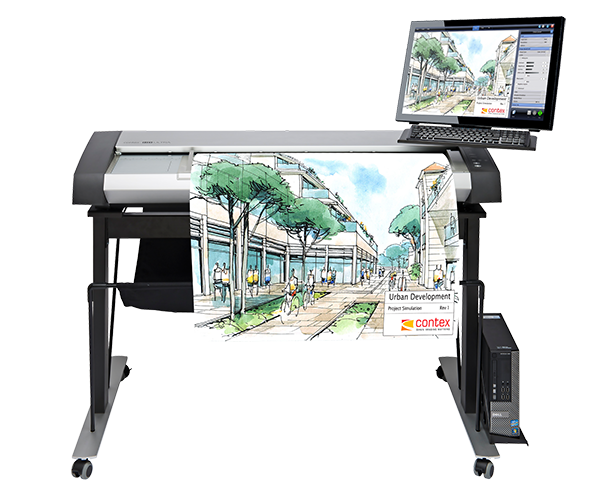Precision in Every Detail
 In the realm of large format scanning, precision is crucial. Whether preserving intricate details of architectural blueprints or digitizing expansive artworks, achieving superior results hinges on mastering the four key elements of hardware design, software options, productivity, flexibility, and image quality. To produce the best digital images at the fastest speeds with the highest quality, you need to make certain scanner requirements fit together and work harmoniously. This comprehensive guide lays the groundwork for navigating the complexities of large format scanning, ensuring that every detail is efficiently preserved digitally. With the help from Contex, the largest manufacturer of large format scanners, we’ll explore these four key elements.
In the realm of large format scanning, precision is crucial. Whether preserving intricate details of architectural blueprints or digitizing expansive artworks, achieving superior results hinges on mastering the four key elements of hardware design, software options, productivity, flexibility, and image quality. To produce the best digital images at the fastest speeds with the highest quality, you need to make certain scanner requirements fit together and work harmoniously. This comprehensive guide lays the groundwork for navigating the complexities of large format scanning, ensuring that every detail is efficiently preserved digitally. With the help from Contex, the largest manufacturer of large format scanners, we’ll explore these four key elements.
Hardware Design: Building the Foundation

 Many design features built into a blueprint scanner may not be noticeable at first glance. Yet, after you experience utilizing this robust equipment, you begin to notice the difference between a good and not so good scanning experience.
Many design features built into a blueprint scanner may not be noticeable at first glance. Yet, after you experience utilizing this robust equipment, you begin to notice the difference between a good and not so good scanning experience.
Consider these attributes:
Scanner Type and Mechanism: Large format scanners come in two primary types: flatbed and roll-fed. Flatbed scanners offer versatility for delicate originals, while roll-fed scanners are adept at handling continuous, longer documents, enhancing efficiency in tasks like blueprint scanning.
Size and Versatility: The width of a large format scanner, ranging from 24 to 60 inches, determines its versatility. A scanner’s ability to handle materials of various sizes and dimensions is crucial for diverse scanning needs.
Simplicity and Ease of Use: The scanners mere design can make it easier to operate. One example is the design of the scanners input platform; some blueprint scanners allow the user to put both hands on top of the original to ensure straight easy guiding into the scanner while other blueprint scanners require holding the original between the operators finger tips to feed in.
This video explains five hardware design features that Contex has made to improve the overall ownership experience.
Software Options: The Brains Behind the Operation
Scanner operating software provides a workflow that makes using the scanner easier, faster and, allows you to make adjustments before and after scanning. Some software provides tools that allow you to produce a digital image that is a true representation of the original and in some cases will allow you to provide a digital image that appears to be even better than the original.
Scanner Integration
Scanner Operating Software is typically sold with or bundled together with the large format scanner hardware, so the consumer or purchaser of the blueprint scanner most often doesn’t know what they are getting or missing in functionality and ease of use with the software.
Software that offers ease of use for setting up the scanning and allows for post-scanning adjustments are considerations that should be explored prior to making any large format scanner purchase to ensure smooth and efficient workflow.
Features & Capabilities
The scanner operating software’s role in image processing cannot be overstated. Look for features like color correction, image alignment, the ability to save in file format options that fit with your workflow, and ultimately to enhance the final scan quality. Here are some key features that we find to be very helpful:
- setting size
- setting resolution
- soft handling for delicate originals
- setting image type
- Auto-rotate
- Auto-align / deskew
- Smooth / sharpen filter
- Black/white, or RGB level adjustments
- Histogram view
- Multi-page scanning
- Saving in various file formats
- Automatic file naming templates
Productivity and Flexibility: Efficiency Unleashed
As stated by Contex, “Productivity and flexibility go hand in hand. To be productive, the scanner must be flexible and conform to your specialized workflows without interruption.”
Scanning Speed: In a world where time is money, scanning speed matters. Faster scanning processes contribute to overall productivity, making it essential, especially in high-volume environments. It really boils down to how quickly and efficiently digital scans can be produced and saved.
Roll-Fed Efficiency: Roll-fed scanners bring a new level of efficiency, allowing for the continuous scanning of longer documents. This feature not only enhances productivity but also provides flexibility in handling different document types.
Image Quality: Capturing Every Nuance
Image quality and accuracy is the result of utilizing a high quality large format scanner with software that offers image enhancement options.
Scanning Technology: There are two distinct types of scanning technology: CIS (Contact Image Sensor) and CCD (Charge-Coupled Device). The type of technology significantly influences the scanning quality. For a detailed explanation of these technologies read our guide on What are CCD & CIS, And How Do They Differ?.
Resolution: Resolution plays a crucial role in capturing fine details. A key factor to be aware of is the scanner’s optical resolution; this will tell you what the blueprint scanner is capable of seeing. To learn more about resolution, read our detailed explanation on What is DPI and How Does it Impact Scanning.
 Color Depth: A broader color spectrum, or color depth, contributes to vibrant and accurate scans. This is vital for tasks like preserving the intricate details of artworks, where color fidelity is important.
Color Depth: A broader color spectrum, or color depth, contributes to vibrant and accurate scans. This is vital for tasks like preserving the intricate details of artworks, where color fidelity is important.
Summary: Obtaining the Perfect Scan
![]() Achieving the perfect scan involves a harmonious interplay of hardware design, software capabilities, productivity enhancements, and a commitment to superior image quality. Large format scanning becomes easy when these elements align seamlessly.
Achieving the perfect scan involves a harmonious interplay of hardware design, software capabilities, productivity enhancements, and a commitment to superior image quality. Large format scanning becomes easy when these elements align seamlessly.
Are you looking to start you own scanning project? Or, are you trying to improve your scanning processes? We can help you explore reputable large format scanning solutions that prioritize these key elements for your particular needs. Please call our experts at (602) 224-9971 or contact us now, we’re happy to help!


